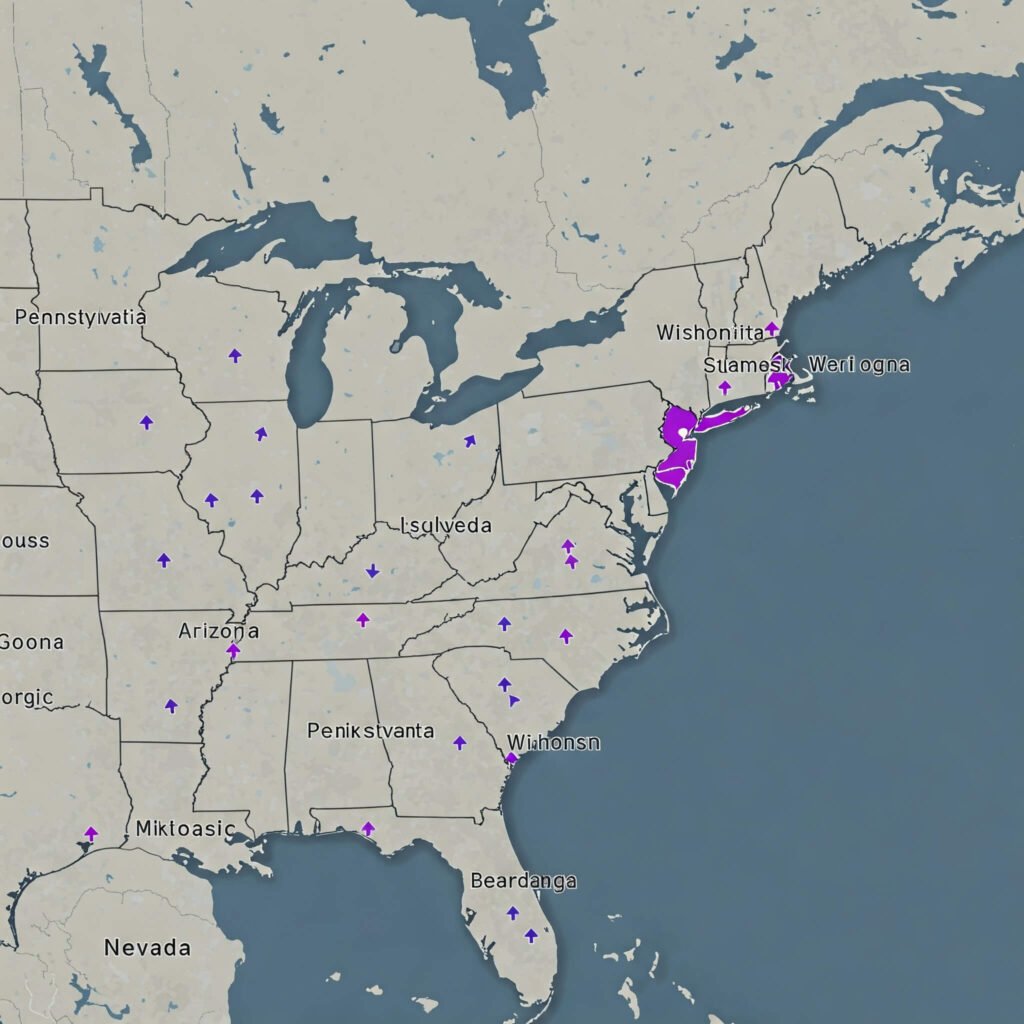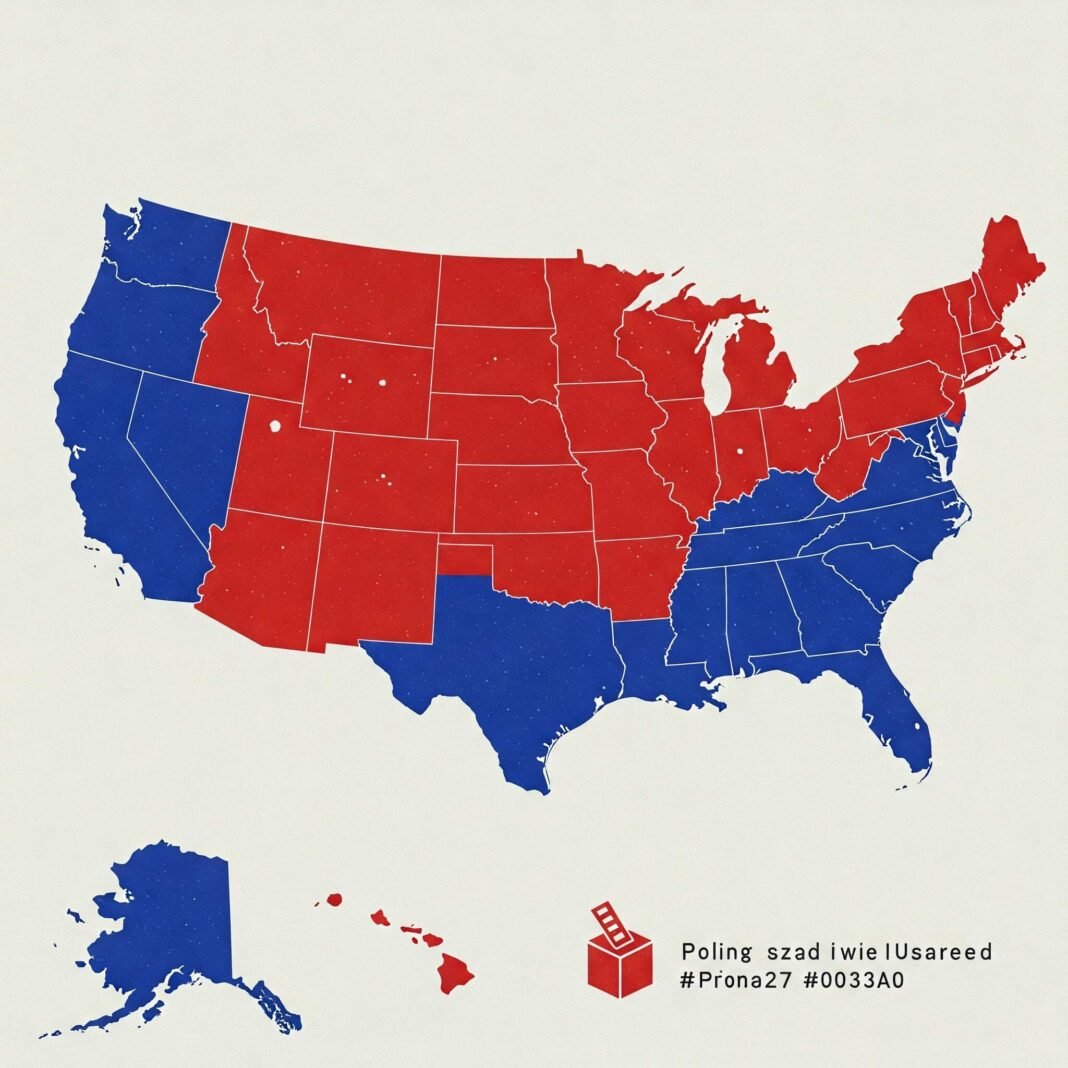Have you ever heard political commentators talk about “red states” and “blue states” and wondered exactly what they mean? Or perhaps you’ve seen an election map light up in shades of crimson and indigo and felt a bit lost? Understanding the Red vs Blue State Voter Guide concept is a fundamental part of grasping the dynamics of U.S. presidential elections and the broader political landscape.
It might seem like a simple coloring contest, but these colors represent the general political leanings of each state, primarily based on recent presidential election results. “Red” typically signifies states that tend to vote for the Republican Party, while “Blue” indicates states that generally support the Democratic Party.
But it’s not just about picking a color. For voters, understanding this breakdown can offer insights into national trends, the importance of specific states in elections, and even how your state fits into the bigger picture. This guide aims to provide a simple, easy-to-understand overview of the Red vs Blue State Voter Guide breakdown.
Understanding the Red vs Blue State Voter Guide Concept
Before we dive into specific states, let’s clarify what “Red” and “Blue” mean in this context.
- Red States: These states consistently vote for the Republican presidential candidate in recent election cycles. They often share characteristics like a strong conservative base, focus on issues like lower taxes, gun rights, and traditional values.
- Blue States: These states consistently vote for the Democratic presidential candidate. They often have larger urban populations, diverse demographics, and tend to prioritize issues like social programs, environmental protection, and civil rights.
It’s crucial to remember that this is a generalization. No state is uniformly red or blue; within every state are voters and communities that lean the opposite way. This is a simplified model to help understand national patterns.
How States Get Their Colors (Briefly!)
A state earns its “Red” or “Blue” label based on its voting history, particularly in presidential elections. Factors influencing this include:
- Demographics: Age, race, ethnicity, education levels, and population density (urban vs. rural) play significant roles.
- Economic Base: States reliant on certain industries might lean one way or the other.
- Cultural and Historical Factors: Long-standing traditions and historical events influence political identity.
- Key Issues: Specific policies or social issues can be more dominant in some states than others.
Breaking Down the Red vs Blue State Voter Guide: State by State (Simplified)
Let’s look at a simplified breakdown of states based on their general leanings. Remember, this isn’t exhaustive, and politics is always evolving!

Solid Blue States: The Democratic Strongholds
These states reliably vote Democratic in presidential elections. They often possess a high number of electoral votes and form a crucial part of the Democratic Party’s base.
- Examples: California, New York, Illinois, Massachusetts, Maryland, Washington, Oregon, Hawaii, Vermont, Rhode Island.
- General Characteristics: Tend to be more populous, have large metropolitan areas, higher levels of ethnic diversity, and often have strong labor union presence.
- What it Means for Voters: While the presidential outcome might feel predictable, local and state elections remain highly competitive and significant. Understanding the strong Democratic base helps explain national trends.
Solid Red States: The Republican Base
These states reliably vote Republican in presidential elections. They represent a significant portion of the Republican Party’s electoral map.
- Examples: Texas, Florida, Alabama, Mississippi, Idaho, Wyoming, Utah, South Dakota, North Dakota, Alaska. (Note: While Texas and Florida are often considered solid red, their large and diverse populations mean they can be more competitive than smaller red states and sometimes even swing in down-ballot races).
- General Characteristics: Often more rural, less population-dense, and tend to have more homogenous populations compared to blue states. Focus on conservative social and economic principles.
- What it Means for Voters: Similar to blue states, local and state races offer critical opportunities to influence policy and representation, even if the presidential outcome is less often contested. Understanding the strong Republican base helps explain national trends.
Swing States: The Battlegrounds
Also known as “purple states,” these states are where the presidential election is typically decided. They don’t consistently favor one party and can swing between Red and Blue from one election cycle to the next. This is where campaigns focus a tremendous amount of time and resources.

- Examples: Pennsylvania, Michigan, Wisconsin, Arizona, Georgia, North Carolina, Nevada. (Note: This list can shift slightly over time based on demographic changes and recent election results).
- General Characteristics: Often reflect a mix of urban, suburban, and rural populations with diverse economic bases and demographics. Voters here are often subject to intense campaign advertising and candidate visits.
- What it Means for Voters: Voters in swing states can feel like their presidential vote carries extra weight, as these states are crucial to winning the Electoral College. Participation in these states is often higher, and the political discourse can be more charged. For a voter in a swing state, understanding the nuances of local issues and how they connect to national platforms is key. Outbound Link: Learn more about the Electoral College
Beyond the Simple Red vs Blue
It’s vital to look beyond the simple state-level colors.
- Purple Counties/Cities: Many “Red” states have deeply “Blue” cities (e.g., Austin, Texas; Atlanta, Georgia), and many “Blue” states have significant “Red” rural areas (e.g., upstate New York, Eastern Oregon). This internal diversity is why even in a “solid” state, your vote still matters in local, state, and even national races.
- Changing Demographics: States aren’t static. Population shifts, migration, and generational changes can alter a state’s political landscape over time, potentially moving it from solid to swing, or even swing to solid.
- Down-Ballot Races: The Red/Blue state label is most applicable to presidential contests. Races for governor, senator, representative, state legislature, and local offices often have their own dynamics, and voters may split tickets (vote for candidates from different parties). Outbound Link: Find your state’s election information

Why This Red vs Blue State Voter Guide Matters to You
Understanding the Red vs Blue State Voter Guide breakdown isn’t just for political pundits. For any engaged citizen, it helps:
- Understand National Election Strategy: See why candidates spend time in specific states and what voter demographics they are trying to reach.
- Contextualize Your State’s Role: See how your state fits into the national puzzle and its historical voting patterns.
- Appreciate Nuance: Recognize that a state’s political identity is complex and involves more than just a single color.
- Stay Informed: Knowing the general leanings can help you better understand political news and polling data related to different states.




